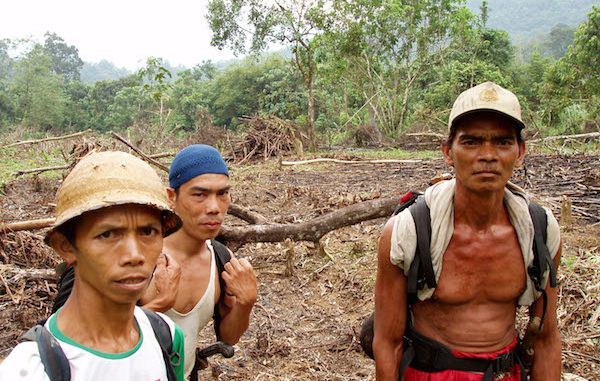
“Men will never rest till they’ve spoiled the Earth and destroyed the animals.”
— Watership Down
Human Extinction?

BYPASS THE CENSORS
Sign up to get unfiltered news delivered straight to your inbox.
You can unsubscribe any time. By subscribing you agree to our Terms of Use
Latest Video
The greatest indicator of human advancement in the two million or so years we’ve taken to dominate the planet is how many animals we’ve killed along the way; still, the World Wildlife Fund has recently published an almost unbelievable statistic: in the past forty years alone, human beings have eliminated more than half the world’s vertebrate species. Moreover, the WWF’s Living Planet Index provides an “ecological footprint,” that is, the scale at which human beings consume natural resources. By that measure, the United States alone would need four Earths to sustain its current consumption level. This isn’t just a report on the health of the world’s animal population — it’s a dire insight to how man’s war against the living planet is self-inflicted genocide.
In a foreword to the LPI, Marco Lambertini, Director General of WWF International writes, “Protecting nature is not a luxury…it is quite the opposite. For many of the world’s poorest people, it is a lifeline. By taking more from our ecosystems and natural processes than can be replenished, we are jeopardizing our future.”
In creating the index, the WWF studied 3,038 species of mammals, fish, birds and reptiles in over 10,000 population groups. Then scientists from the Zoological Society of London examined trends in these populations over time. The results showed startling conclusions:
- Land species such as gorillas, elephants and tigers, have declined by 38%. Deforestation and poaching are major contributors.
- Marine life, such as turtles, sharks, seabirds and fish, has declined by 39%, with over-hunting and pollution being the main threats.
- Freshwater animals are faring the worst. Fish, amphibians, shorebirds and the other animal populations have declined by 79% since 1970. Freshwater extraction and pollution are destroying the habitats of these species.
- While some species are seeing a recovery (Blue Whales off California, Bengal tigers in Nepal), those in decline are dropping off the Earth so quickly, that the overall numbers have plummeted.
The report is exhaustive, and more focused on populations in the tropics, South America and Southeast Asia. The previous Index (from 2012) showed a decline of less than 30%, though over-represented animals in North America and Europe. In industrial nations, most of the damage to animal habitats has already been done through pollution and development; ironically, the wealth created by this destruction has led to after-the-fact conservation efforts. Though it should be noted that the industrial world has simply outsourced the damage – between 1990 and 2003, one-third of crop and livestock goods imported to the European Union have come from third-world land cleared for production.
Of course, there are questions as to the methodology of the Living Planet Index. Stuart Pimm is a conservation ecologist at Duke University in Durham, North Carolina, who recently published a study in the journal Science, on biodiversity and extinction rates. He states, “I’m not a fan of this planetary index because it mixes a lot of different numbers together in an essentially arbitrary way — therefore, it’s hard to know what exactly is meant by a 50 percent loss of vertebrates over the last 40 years. It’s not ‘we lost half of all vertebrates’ — it’s more complex than that.”
Jon Hoekstra, chief scientist at WWF, acknowledged the difficulty with wildlife data in an email, explaining that researchers working with WWF collected data from over 2,000 sources. “There is a lot of data in this report and it can seem very overwhelming and complex,” Hoekstra said in a statement. “What’s not complicated are the clear trends we’re seeing.”
And in order for those trends to be acknowledged and acted upon, they need to be put into a human (read: economic) context when looking ahead to the next forty years.
Today, forest loss and degradation costs the world’s economy up to 4.5 trillion dollars a year, with total environmental damage sapping 6.6 trillion dollars (11%) from the planet’s GDP. At our current trajectory, by 2050 that number will more than quadruple to 28.6 trillion.
“Nature conservation and sustainable development go hand-in-hand,” says Lambertini. “They are not only about preserving biodiversity and wild places, but just as much about safeguarding the future of humanity…indeed, our very survival.”
Sources:
World Wildlife Fund’s Living Planet Report 2014
What You Need To Know About the WWF’s Living Planet Index
Earth Has Lost Half Its Wildlife In the Past Forty Years, Says the WWF

